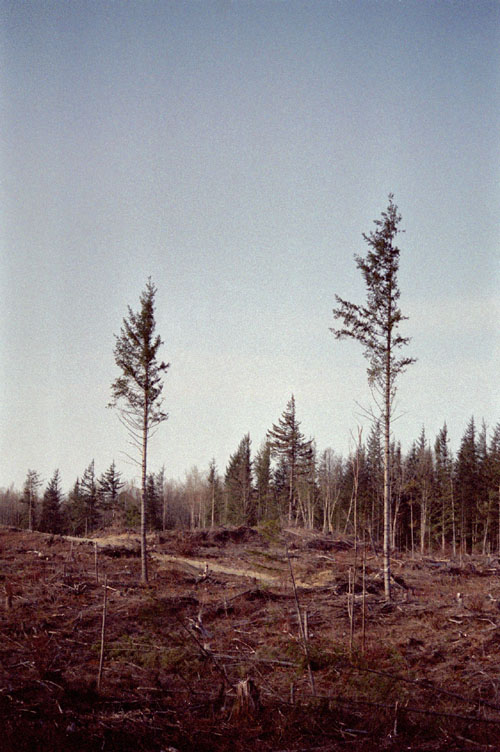I have been scanning old negatives, many of which are starting to deteriorate, years earlier than I expected. The trouble with color film is that over time, the color fades and the film gets grainer and the picture can begin to degrade, especially if the film is not carefully preserved. The deterioration is hastened if the negative is put into an ill fitting plastic sleeve. No film does well when stuck to the sleeve and after having to be pulled out by force.
Luckily most of the negatives are salvageable, including some of my favorites. They are damaged, but a little careful work with Photo Shop hides much of the damage. It’s funny really how easy it is to fix a scratch with Photo Shop, because years ago, when I used to work for photographer in Yakima, one of my jobs was to use dyes and pencils to correct dust spots and damage in color photos or to add tints to black and whites. When I showed both an aptitude and interest for this type of work, the photographer had me trained in Seattle by a professional lab. It was less expensive to have me to do the work and I enjoyed it–better than doing books and waiting on customers, trying to get them to buy cheap wooden frames, while lying to them about how good they looked in their photos.
I worked for Bob off and on for four years, and in the last year all I did was freelance photo correction work for him, using a studio I created in my Dad’s garage. You couldn’t do the work in the house because the fumes from the sprays used to provide a work surface on the photo were nasty without a protective mask.
Now, tonight, a little Photo Shop magic helps me fix the scratches in an old photo in ten minutes that used to take me hours. Sometimes progress is a good thing.

This photo sure brings back memories.
I grew up in a small town dominated by an old fashioned saw mill. Some days the smoke from the mill would be so thick that our eyes would water, and an acrid taste would form in our throats, causing us to cough. Driving to and from our farm 12 miles outside of town we would pass big lumber trucks along the way; we kids would yank our arms up and down and the drivers would catch the hint and pull the cord for their horns, letting loose huge blasts of sound, smiling at our delight.
The risk and threat of fire was a part of our lives living in and among the trees of the national forest area. Once a fire got close enough to our place to leave scorching on our garage, like the dark spit from the tongue of a giant rapacious lizard. I grew up in and among those trees, spending more time in with them than with people.
(I imagine this accounts for my shyness at large parties and formal gatherings–after a few hours I am overcome with a strong urge to find the nearest stand of trees and quickly disappear from sight. Heck, give me a large enough bouquet and I’ll make a run for it.)
Of course, this explains my love of hiking. When I’m out on the paths, I’ll sometimes see a particularly big and beautiful tree, and I’ll just have to stop and admire it. After checking carefully around to see that I am quite alone, I’ll reach up my hand and touch the rough bark, lay my head against the surface, and listen to the heart of the wood; breathing deeply the wonderful brown-green and slightly pitchy gold smell. I used to think in more fanciful moments that I could actually sense the tree pulse with life.
Trees have the most wonderful feel to them.
I moved to Seattle in my teens, then away, then back after I was married. I and my husband used to explore all the wonderful forested area in and around the city and on the Peninsula. Driving toward the ocean, we’d see stands of trees surrounding the roads and it would make us itch to get out and explore.
One day we decided on impulse to follow a lumber road into the hills to see if there might be good hiking. After we crossed over a small hill separating the trees from view of the road, the sight that met us shocked us both into silence. Ahead of us was what was left of a once proud and old forest, now clear cut with only a few trees left standing among the barren and ripped fields.
We parked the car, got out, and just stood there, not saying a word to each other. I grabbed the camera I always carried with me and shot this photo along with others.
I’m glad I was able to preserve the image with my scanner, and correct the damage with Photo Shop. Wouldn’t want to lose it.
Yes, progress is a good thing.
